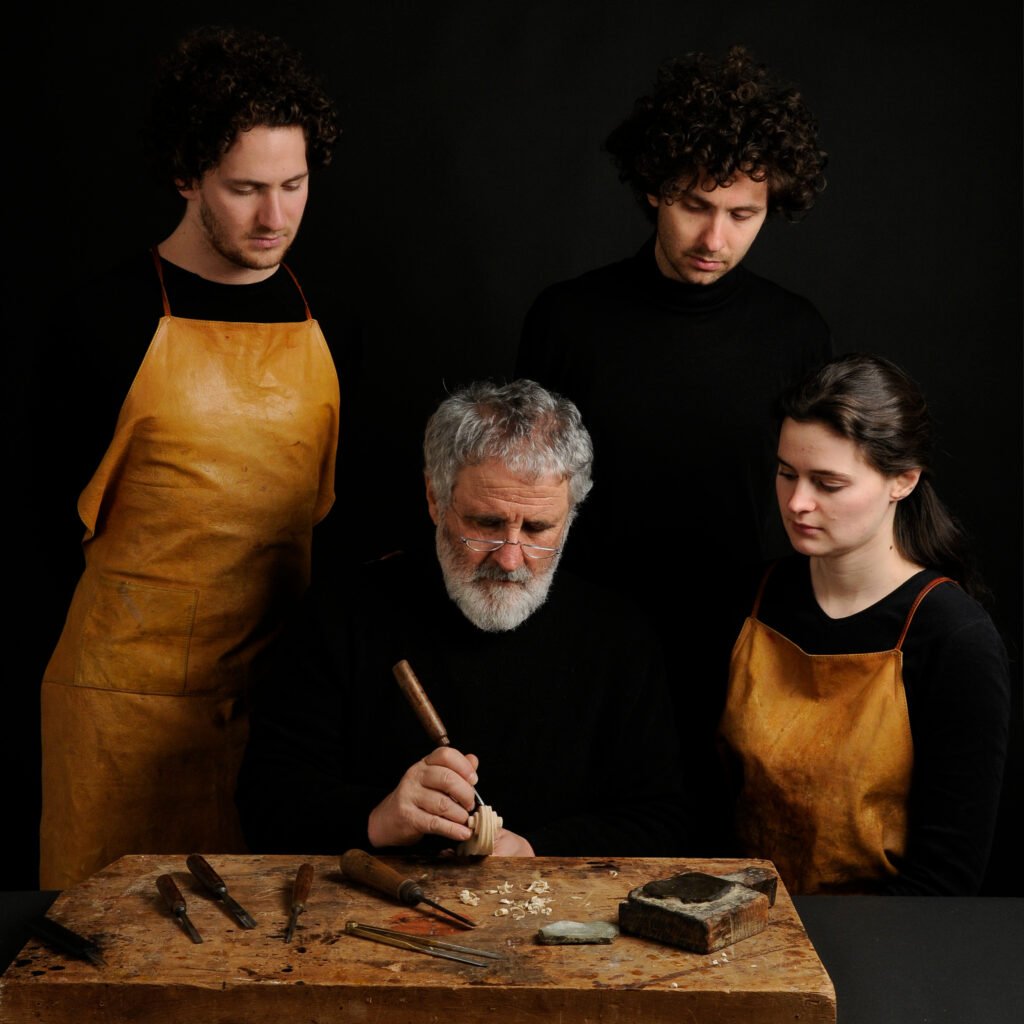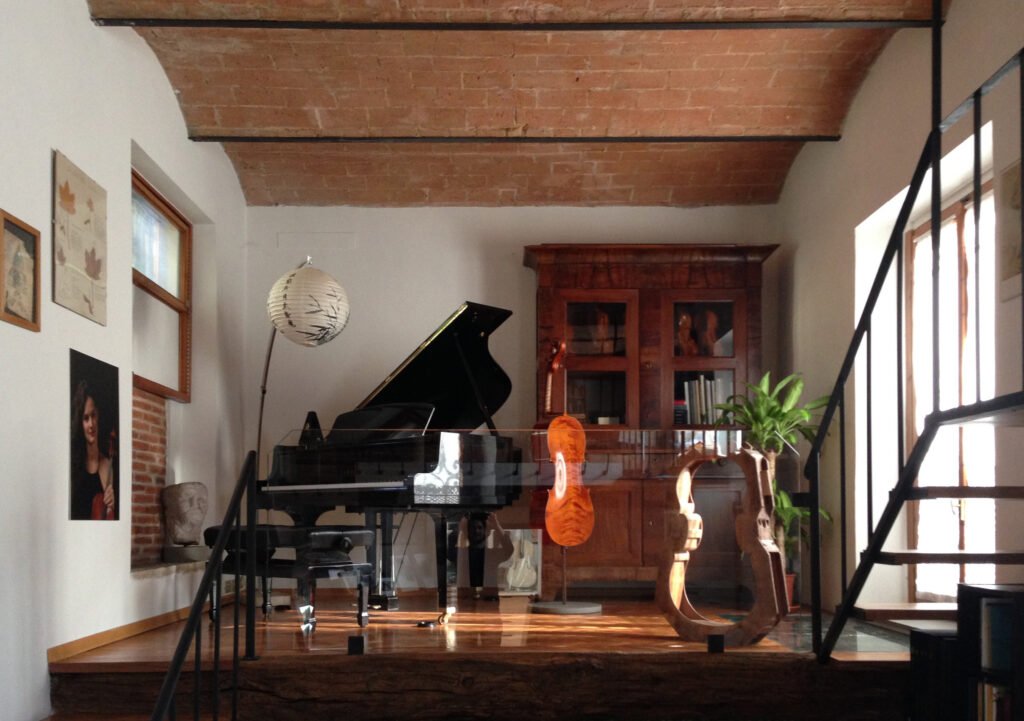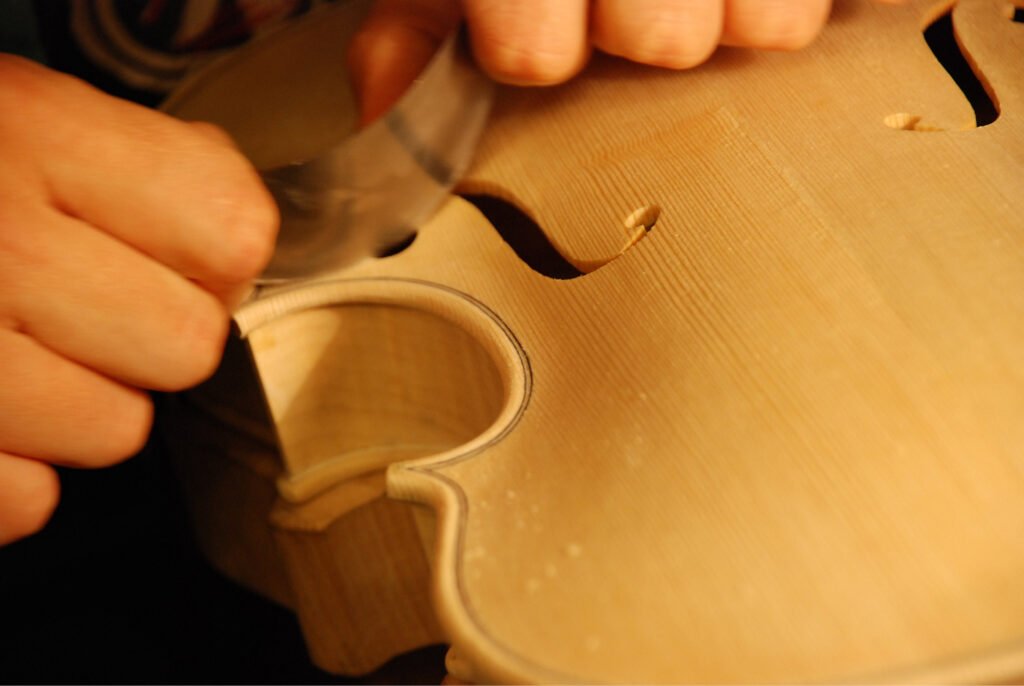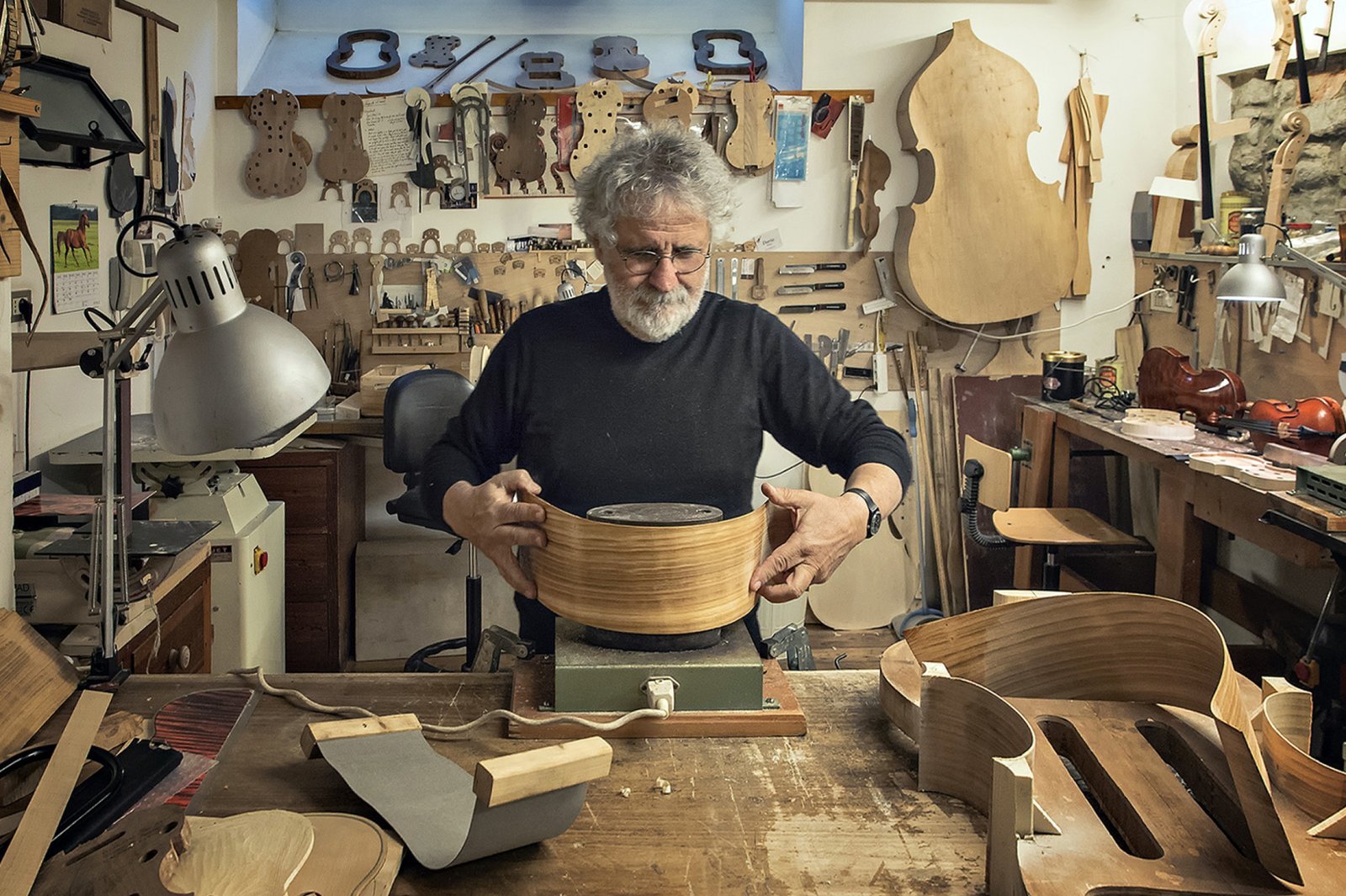Interview Patrick Kasingsing
Images John Isaac and Lucio Ghilardi


Hello! Please introduce yourselves.
We are Dario II and Lapo, from the Vettori Family, makers of the finest violins, violas and cellos since 1935, when my grandfather, Dario Vettori the First started creating violins in the tiny mountainside village of Firenzuola. In that village, he became known as “the violin-maker of the mountains”.
We are now an 84-year old practice that is wholly family-run. My father Paolo and his brother Carlo were the only two pupils of our grandfather, whose constant exposure to his explorations in the craft of violin-making inspired them to set up their own shops, finding success on their own paths.
We are third generation Vettoris who have all pursued the same path chosen by our dear grandfather and father. My brother and I, together with our sister Sofia, work with our father in our family shop in Florence, where we utilize the same workshops, tools, instruments, and ideas, all borne from a violin-making tradition that is the product of our multi-generational learnings from various violin-making personalities and families in Italy who taught and inspired us.
Your family has had a storied past in the field of violin-making, but what do you think fueled your generation to continue the business and keep things going, and in the handmade tradition? How was the love for violins and music nurtured in the family?
I think what fueled us third generation Vettoris to keep the family business going is the history and shared passion the family has for the craft. It is something that goes beyond being a hobby or a means of income. It is a vocation and a calling whose music we’ve answered. Our father has a lot of passion and love for his work, and this was passed on to us, his children. We loved watching him at work and creating his masterpieces, which he compares to sculpting sound. As for keeping the tradition handmade, we believe that the quality and sound of our instruments are best made that way. We also believe that the human touch adds more value and warmth to our works.




Cello model Giuseppe Guarneri filius Andreae by Dario Vettori the Second 

Viola model Pietro Guarneri by Lapo Vettori
Your violins are beautiful pieces of art drawn from a mold that has been passed down through generations. What steps were taken to keep the family process of violin creation faithful and true to the original? Were there changes to the design process made along the way?
We use molds and drawings from our grandfather, who was able to amass quite a collection from his various apprenticeships with different violin-making families across Italy. Grandfather Dario first began with Stradivari models but eventually transitioned to Guarneri del Gesù forms. He was formerly a pupil of Primo Contavalli, which influenced the deep fluting and sharp corners of his early violins, but it was the noted Milanese luthier Giuseppe Ornati that exerted a lot of influence on his succeeding work.
As I mentioned, we are a family of eager learners; we collect violin molds from all over Tuscany. This is something unique to us, and we are very proud and protective of our collection. Tradition for us is very important and forms the backbone of our practice as luthiers. While we depend a lot on our family’s violin-making practices and traditions, we do open ourselves up to experimentation; we try out new molds and materials, anything we find interesting. I think this is also what helps set us apart from the generally conservative world of violin-making.
Can you talk about some of the wood materials you’ve used and found special?
We mostly use maple from both Italy and Bosnia. We have various sources of wood and make use of a variety of types for our work, from the traditional spruce from Val di Fiemme to poplar, willow, cherry and pear wood among others.
There are some standout materials, however, like how we make beautiful cellos from white Bosnian maples, some of which were left by my grandfather for our use, and the time I (Dario) was able to find antique spruce in a sawmill that dates back to the 17th century. There was also that one time when my father was driving his car in the countryside. He then caught sight of beautiful maples which he saved from a fire from a farmer, who let him have it.


“Quality handmade violins…are special in that the process is much a part of its beauty and character as its design.”


Dario Vettori at work in the family workshop 

Sofia Vettori during the varnishing process
What changes or innovations did your shop pursue to keep up with contemporary needs? How have the changes affected the family and clientele?
Innovations…well, the internet for one truly helped as it gave us tremendous possibility to open our market and cast a wider net. Our website is our window to the world and the portal by which people from around the globe can learn about us. The advent of websites and social media is especially good for our overseas clients. We still do things our way, but the clientele has definitely grown with online exposure. The internet has also allowed us to share our expertise and share our views on the importance of tradition, patience and material choices in the field of violin-making.
Today’s world has hurtled towards speed, efficiency, and mechanizing processes, but there is still clamor for handmade instruments. Why do you think this is so? What distinct qualities do handmade instruments have that mass-produced ones don’t?
I actually think that drawing out patience and the long waiting time for handcrafted objects, like our violins, make people appreciate and love the craft more because it makes them aware of how much time, care, passion and dedication is necessary to produce works of beauty. It takes six months up to a year to complete a violin commission. While mechanized processes can speed up production, hardcore violinists and fans know that the sound and build quality of handmade violins are much different, and definitely more attractive and special in that the process is much a part of its beauty and character as its design.
What are the qualities of a Vettori violin that is distinctive to it and no one else?
Definitely its familial heritage. What makes every Vettori violin special is that it is a product of the learnings and practices of a single family devoted to perfecting the art of violinmaking. This is something our clients cherish about our pieces.
Any interesting or memorable anecdotes about clients who’ve bought and used your violins?
We once had a professional musician client whose husband owned an original Stradivari violin. A teacher as well, the musician came to Florence for a masterclass and fell in love with a cello we created. The cello wasn’t for sale, however. She came back to us and wanted to try the cello again. We lent it to her. She professed to us: “I am in love, and I have to buy this cello.” The husband also told us how his wife was so enamored with the instrument and that as he loves her so, he pleaded its sale to us. We were won over by the client’s passion for the instrument so we sold the cello to her, and she toured with it.
How would you describe the violin-making scene now?
It is now very international, something we have always been used to, as even in the olden days, my grandfather had an open mind. Every region in Italy had its own style of violin-making and my grandfather was able to learn from various regions and schools, devouring techniques and designs, eventually producing ones distinctly his own.
In today’s open and diverse world, being open-minded is a must, and I’m glad to say this has been passed on to us. We know having an open mind opens us up to even more learning. The advent of the internet has also helped widen and increase exposure to the practitioners and practices surrounding the world of violin-making, which I think is good because it reveals the amount of work and dedication needed to produce our pieces. •


The world of violin-making according to The Vettoris at vettorifamily.com
*Originally published in Kanto No. 4, 2019. Edits were made to update the article.

